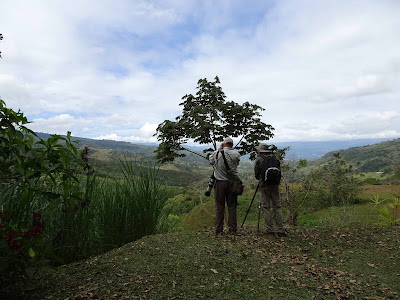In the mean time we had a day with nothing planned and
decided to visit the park. Mark called
the volunteer coordinator, who is also the Superintendent, Scott, to see if we
could meet with him.
We visited with Scott for a couple of hours. Turns out he has worked at three other state
parks we have volunteered at. He showed
us the volunteer sites and the maintenance buildings and then informed us that
the volunteers for this coming winter (November-January) were not going to come
back and that time slot was open, if we wanted it.
We told him we would let him know and thanked him for
taking the time to talk with us.
There are 4 bird blinds in the park so we decided to do a
little birding while we were here.
They are very well maintained and most have beautiful
water features. One of our jobs as
volunteers would be to fill bird feeders every morning. Scott was also intrigued that we were birders and mentioned that they would like for us to lead bird walks as well.
This is a great area to see birds. Some of them are large and colorful.
Woodhouse's Scrub Jay
Spotted Towhee
While others are LBJ's (Little Brown Jobs).
Lincoln's Sparrow
Fox Sparrow
This water feature was popular with a group of Cedar Waxwings and a Robin.
We also saw the strangest looking Gray Catbird we'd ever seen. This poor bird had no tail. Absolutely none! This wasn't a normal feather replacement, so we guessed that some predator had gotten a hold of it by the tail and had yanked the entire thing off. The bird was flying awkwardly but seemed to be getting by.
After seeing some great birds we stopped by the visitor
center once again and told Scott, We’ll take it!. So, we know where we’ll be this coming
November!





















































